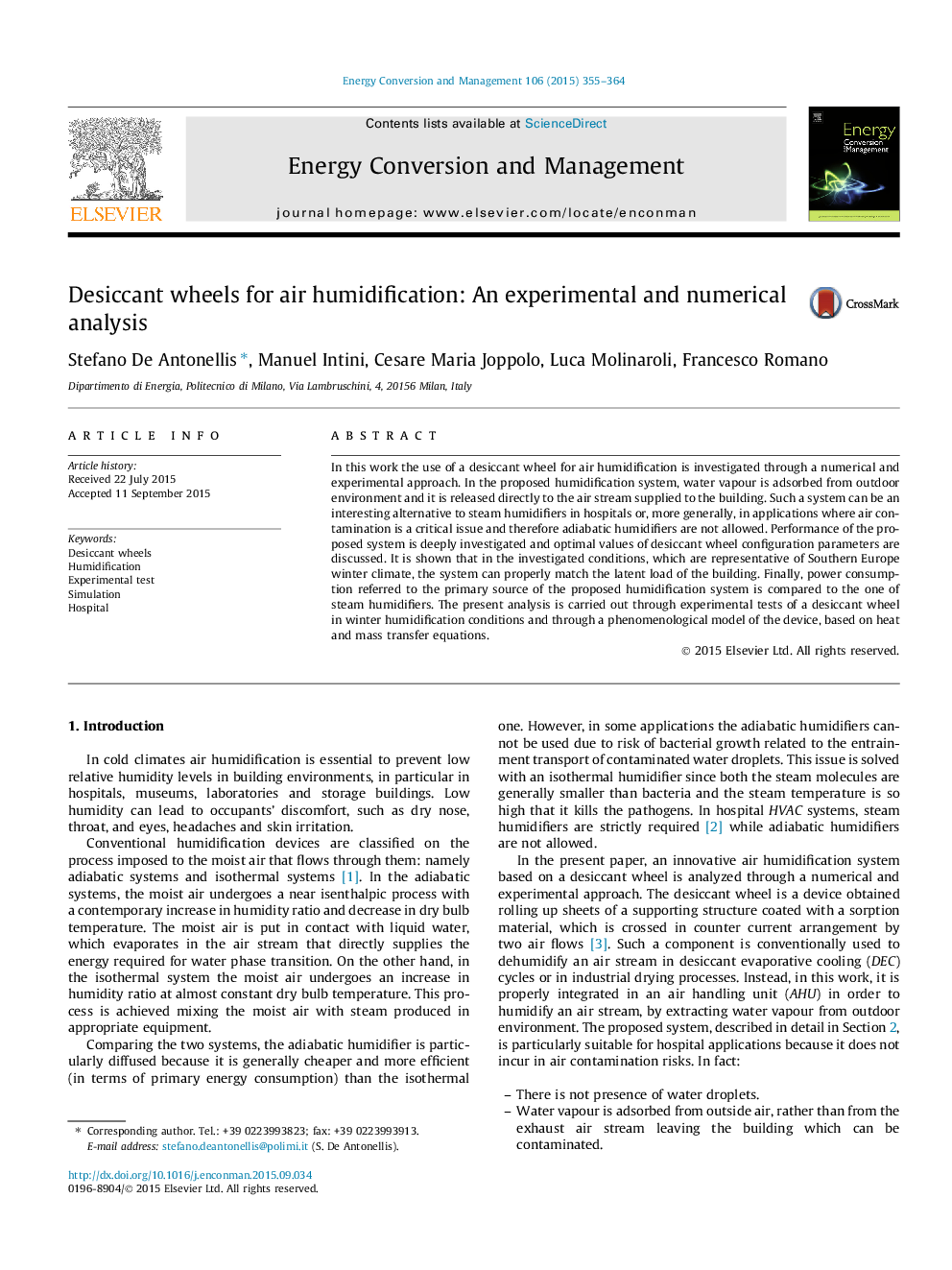| کد مقاله | کد نشریه | سال انتشار | مقاله انگلیسی | نسخه تمام متن |
|---|---|---|---|---|
| 7161636 | 1462856 | 2015 | 10 صفحه PDF | دانلود رایگان |
عنوان انگلیسی مقاله ISI
Desiccant wheels for air humidification: An experimental and numerical analysis
ترجمه فارسی عنوان
چرخ های رقیق کننده برای رطوبت هوا: یک تجزیه و تحلیل تجربی و عددی
دانلود مقاله + سفارش ترجمه
دانلود مقاله ISI انگلیسی
رایگان برای ایرانیان
کلمات کلیدی
چرخ دیزکستر، رطوبت، آزمایش تجربی، شبیه سازی، بیمارستان،
ترجمه چکیده
در این کار استفاده از یک چرخ واشر برای رطوبت هوا از طریق یک روش عددی و تجربی مورد بررسی قرار می گیرد. در سیستم رطوبت پیشنهادی، بخار آب از محیط خارج شده جذب می شود و به طور مستقیم به جریان هوا که به ساختمان منتقل می شود آزاد می شود. چنین سیستمی می تواند جایگزین جالب برای دستگاه های هوای بخار در بیمارستان ها و یا به طور کلی در کاربردهایی باشد که آلودگی هوا یک مسئله حیاتی است و از این رو رطوبت سازهای آدیاباتیک مجاز نیست. عملکرد سیستم پیشنهاد شده عمیقا مورد بررسی قرار گرفته و مقادیر بهینه پارامترهای تنظیم چرخ دیزاکانت مورد بحث قرار گرفته است. نشان داده شده است که در شرایط مورد بررسی، که نماینده آب و هوای زمستان جنوب اروپا می باشد، سیستم می تواند به طور مناسب با بار غریزی ساختمان سازگار باشد. در نهایت، مصرف انرژی به منبع اصلی سیستم رطوبت پیشنهادی اشاره دارد به یک دستگاه هوای بخار مقایسه می شود. تجزیه و تحلیل حاضر با استفاده از آزمایش های تجربی چرخ دیزکن در شرایط رطوبت زمستانی و از طریق یک مدل پدیدارشناسی دستگاه، بر اساس معادلات انتقال حرارت و جرم انجام می شود.
موضوعات مرتبط
مهندسی و علوم پایه
مهندسی انرژی
انرژی (عمومی)
چکیده انگلیسی
In this work the use of a desiccant wheel for air humidification is investigated through a numerical and experimental approach. In the proposed humidification system, water vapour is adsorbed from outdoor environment and it is released directly to the air stream supplied to the building. Such a system can be an interesting alternative to steam humidifiers in hospitals or, more generally, in applications where air contamination is a critical issue and therefore adiabatic humidifiers are not allowed. Performance of the proposed system is deeply investigated and optimal values of desiccant wheel configuration parameters are discussed. It is shown that in the investigated conditions, which are representative of Southern Europe winter climate, the system can properly match the latent load of the building. Finally, power consumption referred to the primary source of the proposed humidification system is compared to the one of steam humidifiers. The present analysis is carried out through experimental tests of a desiccant wheel in winter humidification conditions and through a phenomenological model of the device, based on heat and mass transfer equations.
ناشر
Database: Elsevier - ScienceDirect (ساینس دایرکت)
Journal: Energy Conversion and Management - Volume 106, December 2015, Pages 355-364
Journal: Energy Conversion and Management - Volume 106, December 2015, Pages 355-364
نویسندگان
Stefano De Antonellis, Manuel Intini, Cesare Maria Joppolo, Luca Molinaroli, Francesco Romano,
